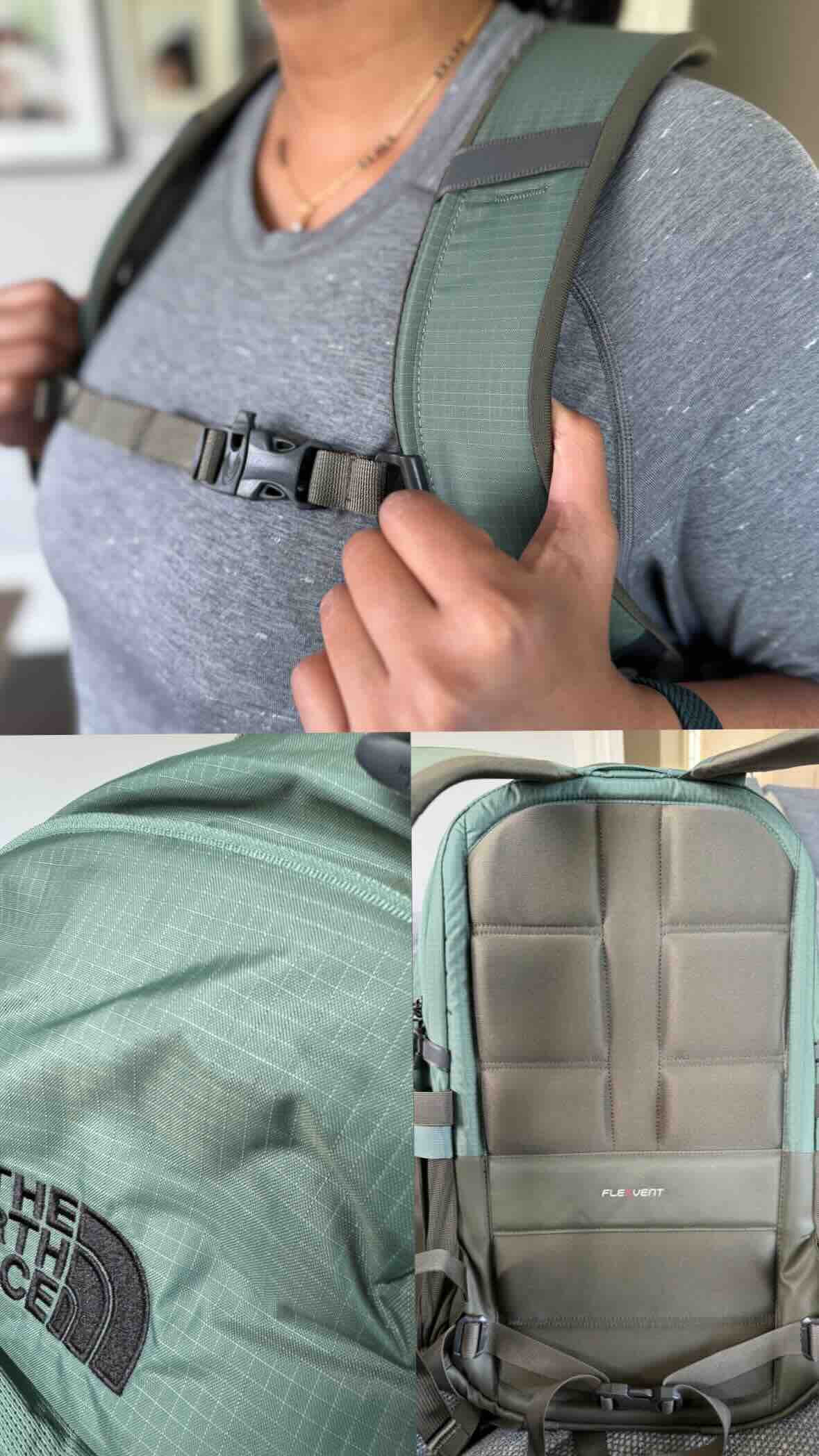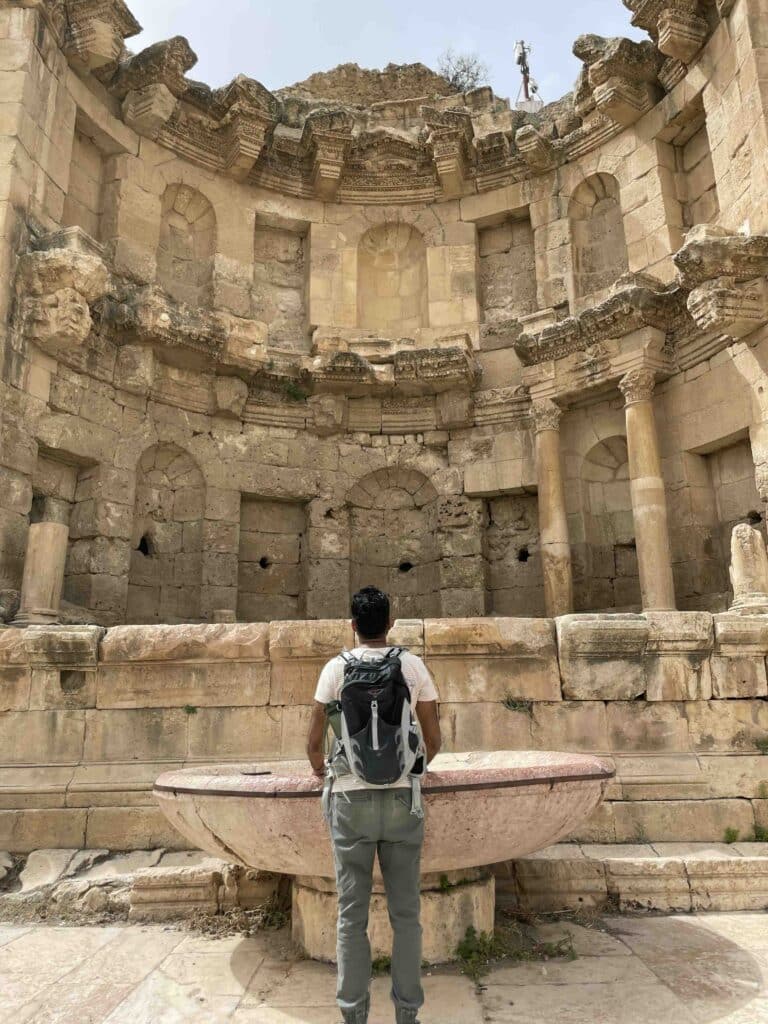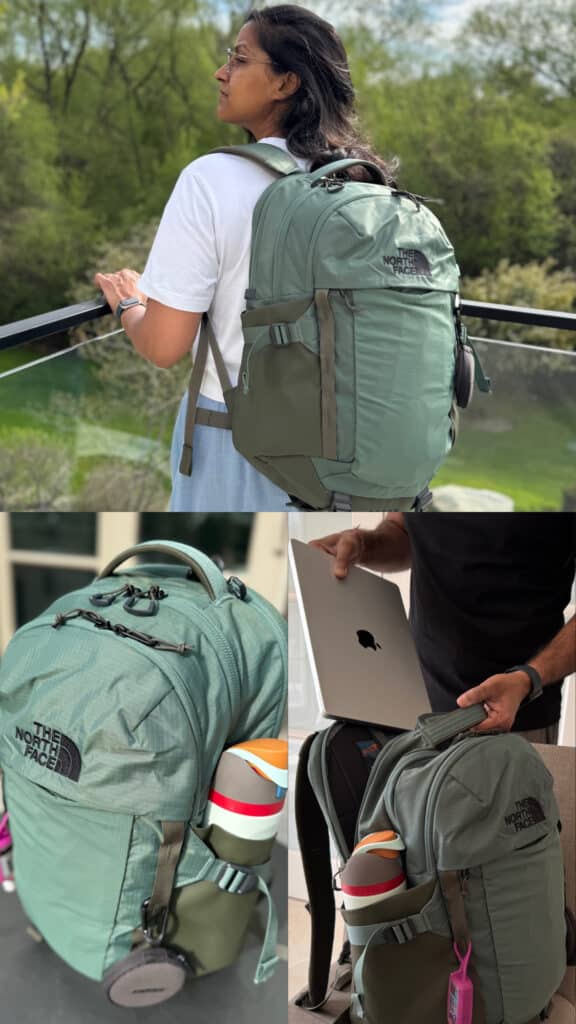There are thousands of backpacks on the market today. And, with so many models and sizes to choose from, how do you pick the best backpack to suit all your wants and needs?
This is the exact conundrum I recently ran into when my wife and I had to find a replacement for my 8 year old backpack.
So, what criteria did I use in my search for the Ultimate Multi-Function Backpack? And, which pack did I end up choosing?
Well, let’s get into it!
Disclaimer: This content is not sponsored. It’s my unbiased opinion based on personal research and outdoor experience.
Article Contents:
Backpack Functionality 101
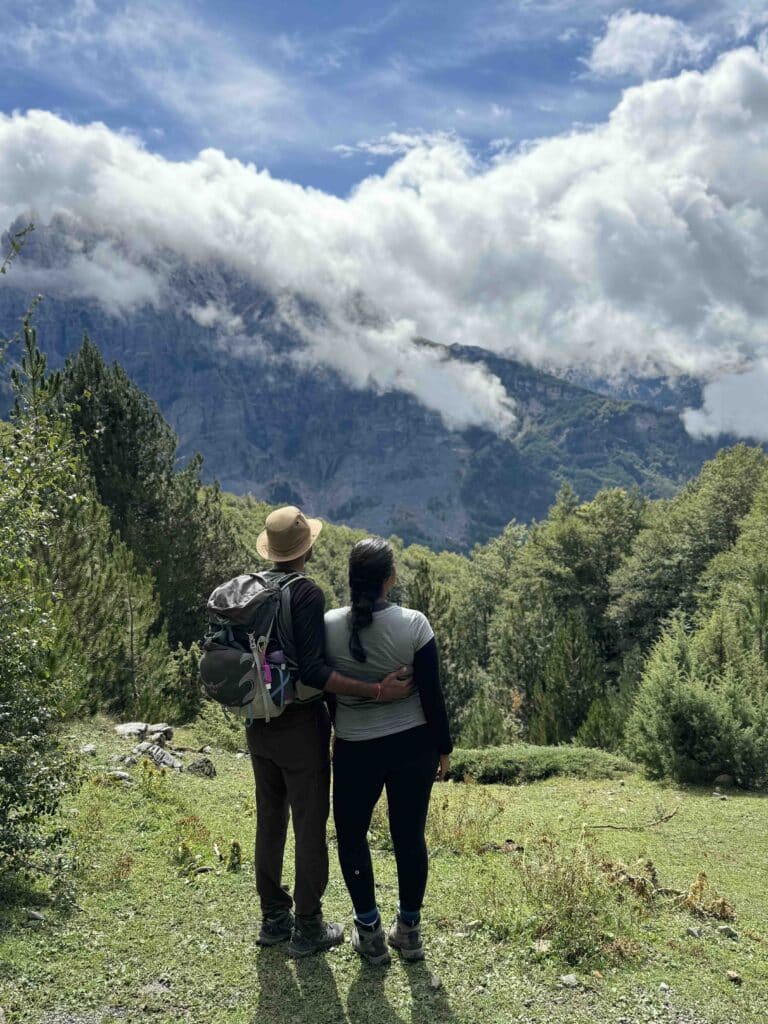
Typically, backpacks are designed for a specific use.
For example, a commuter pack won’t function well as a hiking daypack. Likewise, a travel pack probably won’t be great for everyday carry.
Personally, I like using equipment for multiple situations and consider my pack as a “multi-tool” of sorts.
Therefore, I need my backpack to work as an:
- EDC (every day carry) for work
- Hiking and enduro biking backpack
- Travel carry-on item
In this multi-function role, my backpack needs to fulfill the following criteria:
- Made from water repellant and durable fabric
- Contain a dedicated laptop sleeve / hydration bladder pouch
- Two external water bottle pockets
- Dimensions to fit under an airplane seat
- Waist belt for added stability while biking and hiking
- Comfortable to carry for a full day
Yes, these are some hefty goals, so finding one backpack to satisfy all these needs was a challenge. But, as the saying goes… where there’s a will there’s a way!
What Size and Capacity Backpack is the Best?
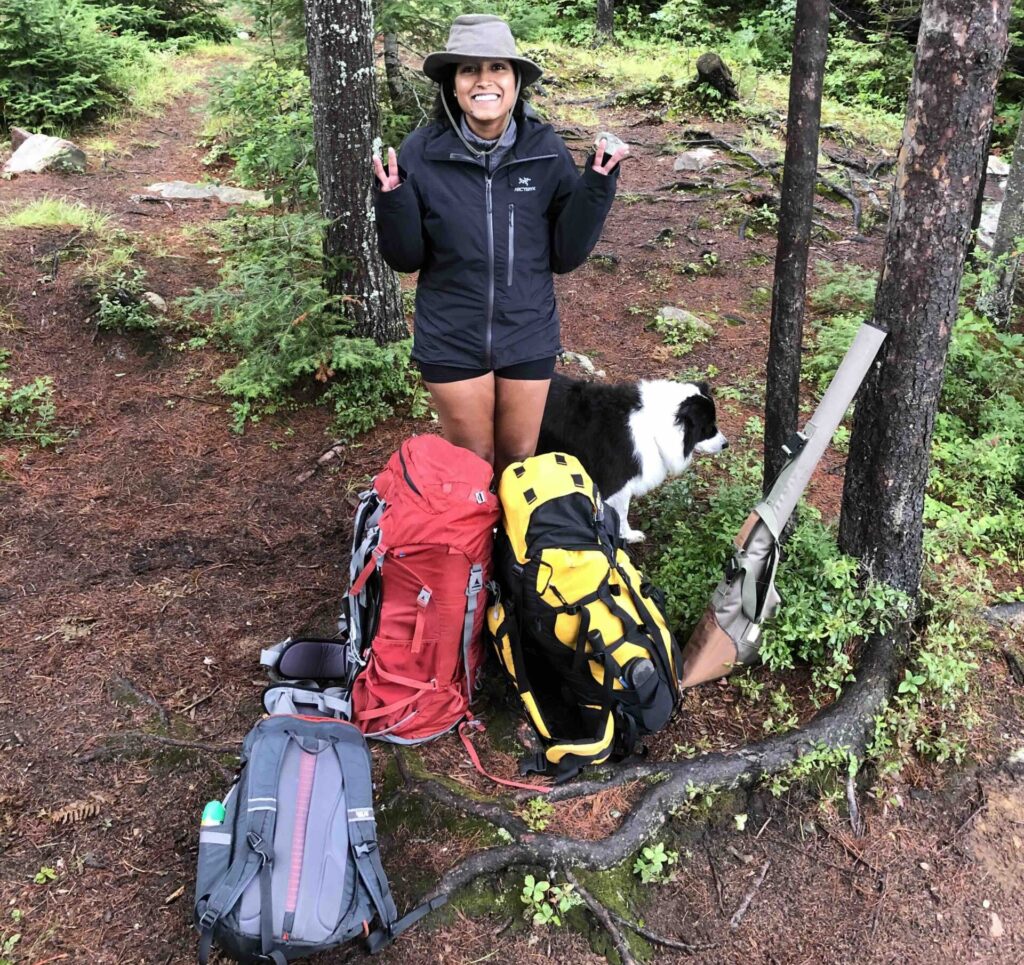
Perhaps the single most important question you should ask yourself when selecting a backpack is “what size or capacity do I need?”
Backpack storage capacity, or fill volume, is typically listed by manufacturers in litres. For reference, I’ve listed below the typical volume capacity of different packs. From small hip packs, all the way up to large duffle-type packs.
- Hip and waist packs: 0.25 to 2L
- Cross-body slings and packs: 2L to 10L
- Daypacks: 10L to 25L
- Plane carry-on packs (small; under-seat): 25L to 35L
- Plane carry-on packs (large; over-head bin): 35 to 45L
- Backpacking or duffle bags: +45L
With certain backpacks, you can artificially increase volume capacity just by utilizing daisy chain straps to attach smaller bags, as well as stuffing expandable mesh pockets.
Now, if you’re like me and you need a multi-function backpack, you need to carefully consider all possible situations.
Pro-tip: I’ve found that the best all-round, multi-functional backpack size is 30L. This size is perfect for travel, outdoor activities, and to carry everyday for work and leisure.
What Type of Fabric is Good for a Backpack?
Backpack fabric materials dictate its weight, durability, and weatherproofness. From the primary pack fabric, to the should straps, material performance is key when choosing the right pack.
Primary Backpack Fabric
Canvas, leather, polyester, and nylon are typical materials used for backpacks. They each have their own pros and cons.
I recommend 200 denier or higher rip-stop nylon with a TPU (thermoplastic polyurethane) or DWR (durable water repellant) coating.
This will ensure a lightweight bag that is both durable and water-resistant, keeping the contents safe and secure in most weather conditions.
Shoulder Straps
Shoulder straps are important as they transfer the load from the backpack onto your body.
To ensure comfort and proper load distribution, the straps should be wide and include padding.
Heavy-duty foam embedded into the straps are recommended, as well as a sternum strap to stabilize the load on your chest.
Back Padding
The rear panel on a backpack should be constructed, designed, and sized to ensure even weight distribution and maximize airflow on your back.
A suspended mesh backing or one made from foam with plenty of grooves for airflow will ensure you won’t get a sore or sweaty back from a full day of carrying the pack.
Also, the larger the back pad, the greater the weight distribution. A smaller back pad may put too much pressure on certain points, including directly on the spine.
Pre-tip: Measure the square area of your back and compare it to the size of the rear panel of the pack you’re considering.
11 Backpack Features You Need to Consider
1. Water Resistance
From a light drizzle to a torrential downpour, having a pack with some water resistance ensures your gear is kept dry.
TPU or DWR coated fabrics offer excellent protection from rain and give you peace of mind for sensitive items.
2. Laptop Sleeve / Water Bladder Pouch
Having a dedicated, padded and suspended laptop pouch ensures it’s kept protected from drops. It also allows for quicker access (e.g., during security screenings at airports).
In some instances, the same pouch can be used for a hydration bladder. This gives you the ability to convert your backpack from a work pack to a hiking pack easily. Just ensure there’s an included port for the hydration line.
3. External Water Bottle Pouches
Having one or two external water bottle pockets ensures you carry enough water for those longer hiking treks.
External pockets keep any leaks from getting inside and offers quicker access to bottles. These pockets also double as storage for tripods, umbrellas, trash, and trekking poles.
4. Compression Straps
Although not critical, compression straps allow for your pack to be cinched-down, to keep internal items compact and contained.
Compression straps also come in handy if you need to squeeze your backpack down to fit into airline carryon requirements.
5. Waist Strap
A backpack waist strap is very functional when you’re hiking, cycling, or doing something very active.
It keeps the pack and the contents from swinging freely. This can minimize impacts and strain on your back.
Plus, larger straps can shed some of the load onto your waist, lessening the burden on your back.
6. Organizer Pockets
A traditional rucksack with just one large storage area can lead you to just throw everything in.
Having a dedicated organization section, with multiple sizes and types of pockets, allows you to keep important items safe and easily accessible.
Keys, passports, travel documents, phones, pens, all kept secure, segregated and readily available.
7. YKK Zippers
Something that is often overlooked are bag zippers. We’ve all had to deal with a zipper that’s come undone at one point or another.
It can be very frustrating to deal with. That’s why zipper type is important.
YKK zippers are the preferred zipper type for equipment. They are Japanese-made, which is reflected in their excellent quality, reliability and durability.
So, how can you tell if the zippers are YKK? It says so right on the zipper pull tabs!
8. Daisy-chain Straps and Outer Connection Points
Having the ability to clip on a carabiner to your pack is great. Perfect for bottles, dog gear, safety equipment, etc.
9. Expansion Pocket or Bungee Chord
To add extra storage capacity, some backpacks include either an expansion pocket or bungee cord.
Helmets, jackets, even wet shoes can be placed there and not inside your pack, so it’s a great way to add more gear without adding much base-weight to the backpack.
10. Sternum Strap with Whistle
For even weight distribution across your shoulders, a sternum strap is recommended.
Much like a waist strap, a sternum strap helps to stabilize the pack load on your body especially during high-impact activities (i.e., cycling, mountaineering,
A built-in buckle whistle is useful to signal for help or ward-off dangerous animals on a chance encounter.
Pro-tip: The universal signal for help using a whistle is three long blows, followed by three short blows, followed by three long blows.
11. Colour-way and Branding
Darker fabrics absorb more light and get warmer throughout the day. Lighter fabrics tend to show stains and discolouration.
Depending on your preference, you might choose a backpack with less branding. This may prevent would-be thieves from targeting your stuff.
Brands tend to rollout different colour ways and styles for the same products throughout the year. So, if you’re looking for a particular colour, just wait a few months to see if it gets released. Usually, when this happens, discontinued colours get marked-down in price.
My Recommended 30L Backpack
After scouring the internet and visiting a dozen outdoor retailers, I finally found a backpack that checks off all of my wants and needs.
The 30L Recon by The North Face is what I consider the best multi-function / multi-purpose backpack on the market.
It’s the perfect size for travel, work, and outdoor adventuring. Its design and construction make it robust for camping, hiking, and biking, yet sleek and refined for everyday carry into the office or onto a plane.
And, for its price and overall build quality, I don’t think there’s many other backpacks that come close. I purchased mine directly from The North Face and it cost $150 CAD + tax. Shipping was included.
So, whether it’s stuffed with laptops, rain gear, or snacks, I know my trusty backpack will be there packed with the essentials…
Well, unless my wife forgets to pack it for me.
So there you have it, how to buy a backpack made crystal clear as well as my recommended all-purpose backpack. I hope you’ve found the information practical and useful.
Happy adventuring, and see you out there!
This article contains affiliate links, which help support this blog at no cost to you!

